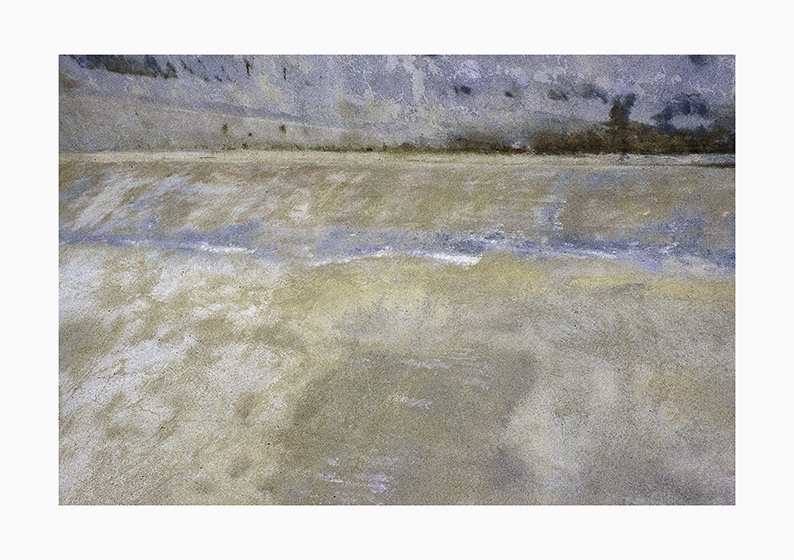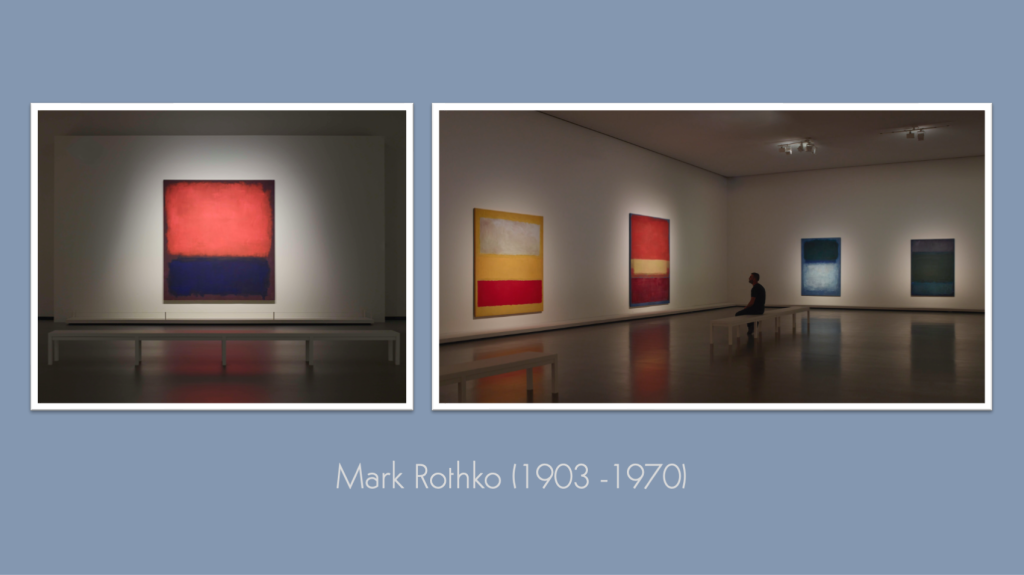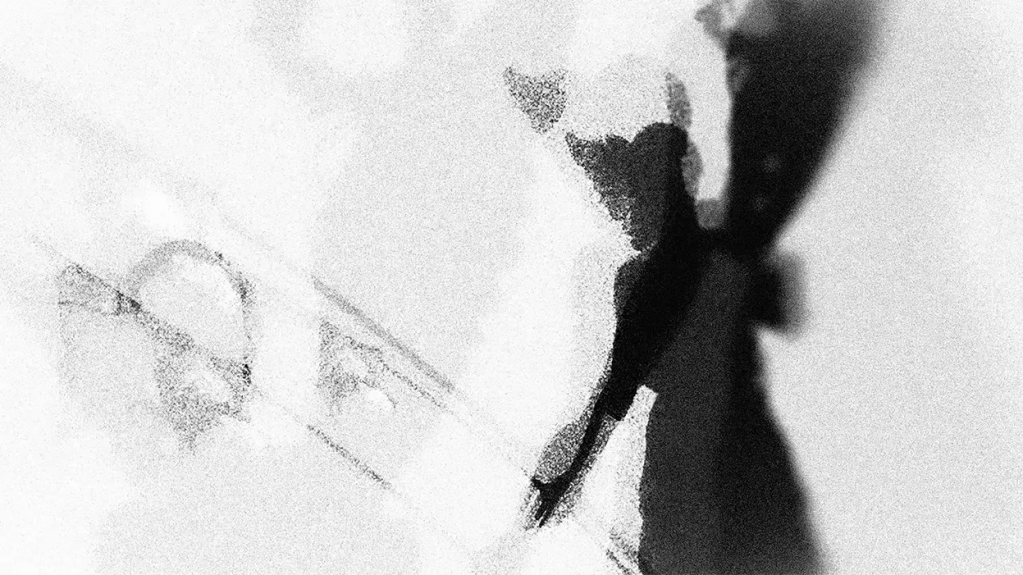
From the internal and endlessly expansive spaces of our memories, as inspired by our previous Kick-About together, we’re this week exploring the mind-boggling extremities of different scales, courtesy of Charles and Ray Eames’ 1977 short film, Powers Of Ten. Enjoy this latest showcase of ‘new works made in a short time’, the big and the small and everything in-between.
James Randall
“As a youngster I recall the concept of infinity as an exciting concept that had huge at one end and tiny at the other. Then it got a bit messy and I threw in the concept of mother nature as a religion to cover the extremities. I approached this KA as a mechanical exercise where a square is 1×1 of a certain colour, 10×10 are lines across and down in the next colour wheel colour (and I varied the thickness of the lines and added some variation within the colour stop and the opacity to make it a bit more interesting), added another hatching of lines for 100×100 and another for1000x1000. I didn’t go further as this visual started to grey off. I then repeated the exercise with sets of adjacent squares and lines with an increase in colour wheel increments as I went along. Finally I went back to each layer and slightly messed up each layer either by moving or resizing them. Not unpleasant but meaningless.”




Vanessa Clegg
“Initially this flummoxed me despite loving the film… how do I react visually? Then, eureka,I realised the drawing I’ve been ,on and off, working on since lockdown would ‘sort of’ slot into the micro/macro thing. The idea behind it was based on my calendar where I diagonally cross off each day (otherwise I’d be walking in circles) alternating direction as I go. The gessoed board was divided into a tight grid so the lines filled each square gradually building a pattern which subconsciously reflected the curtains of my childhood home (weird. Anyway leaving areas clear or less worked and stepping back it becomes the. sky..no planes..no birds…silence…as I remember the atmosphere of 2020. Micro/macro.”


Pencil on gessoed board stained with blue oil paint. 4’ X 3’ (right hand section still being given final layer)
Gary Thorne
“The camera distance to the mirror surface is .0003 of a kilometre, the distance from mirror surface to the actual object is 150.56 million kilometres, hence it being a blurry object, and the time of day is 14:16 with a current temperature of 25 degrees celsius.”





Charly Skilling
“Whilst thinking around the film ‘Power of Ten, I came across some images of the cellular structure of a sunflower’s stem and of sunflower pollen under the microscope. These images reminded me of some odd yarns in my collection and all of a sudden I found myself building the various layers of a sunflower from the centre out. Like Topsy, it just grew and grew, and by the time I had reached the countryside surrounding the sunflower fields, I had to call a halt. It was the opposite of disappearing down a rabbit-hole – I was in danger of disappearing into outer space! Great fun, though, as always!”












Phil Cooper
“I really enjoyed watching the film by Charles and Ray Eames, it took me straight back to my ‘70s childhood and adolescence, pre-internet, when occasionally I’d stumble across films like this on the TV and it would blow my mind.
Powers of Ten got me thinking about scale – albeit in a much more modest way than in the film – and I used some sketches I’d made of a clump of sea kale I’d photographed on Dungeness to make an image about a wood in late summer. I layered a couple of sketches and the plants started to look more like trees, laden with fruit. As the sea kale was growing right next to a nuclear power station, a radiation leak could turn them mutant, just like in the films, and they would grow into giants, so that the pea-sized seeds on the original plant become as big as apples.”







instagram.com/philcoops / hedgecrows.wordpress.com / phil-cooper.com
Graeme Daly
“This film made me think of how minute our little planet is, and wonder about the possibilities of life many light years away. I wonder what those other planets could look like and the beings who inhabit them? I decided to create some nebulas using the textures from a previous exhilarating Kick-About and stamped them onto simple 3D spheres, superimposing them atop those same textures, while painting galactic elements to create milky ways that possibly maybe could be…”








@graemedalyart / vimeo.com/graemedaly / linkedin.com/in/graeme-daly / twitter.com/Graeme_Daly / gentlegiant.blog
Marion Raper
“This amazing film by Charles and Ray Eames reminded me about the relatively recent invention of the James Webb Space Telescope (JWST) which is able to see further back in time than any other telescope has been able to. It was originally designed to study some of the universe’s oldest galaxies and has a mirror that detects molecules such as water, CO2 and ammonia in the atmosphere of distant exoplanets, and the ice and dust that form stars, planets and comets. Scientists say studying these molecules and learning more about the chemical reaction that happens in these places will help us to understand how planetary systems form. This information could also tell us if the conditions for life are unique to our solar system. My collage artwork this time is an attempt to capture a view from JWST of a far off galaxy thousands of light years away.”





Kerfe Roig
“I enjoyed the video, but I really have no coherent explanation for the thought process that led me from there to here. I do know I think in circles, not boxes, when considering time and space. And it was such a bombardment, I felt I needed to be minimal. I used a variegated grey thread to try to create some shimmer. For my pantoum, I took part of an old poem about zero and combined it with words and ideas I wrote down from the narration.”

zero, or: without limits
the direction is lost–
distances traveled
waver and shift–
perspective changes
distances traveled
approach and return–
perspective changes,
light years converge
with approach and return,
darkness increases–
light years converge,
explode
darkness increases,
becomes empty,
explodes
into energy
becomes empty–
a transformation
into energy
at the center of nowhere
a transformation–
invisible, uncoiling
at the center of nowhere
inside time’s pocket
invisible, uncoiling,
wavering–shifting
inside time’s pocket–
the direction is lost




kblog.blog / methodtwomadness.wordpress.com
Tom Beg
“This Kick-About submission ended up with a lot false starts and the remains of ideas scattered amongst the bits and bytes of a computer hard drive. A downfall of my own making perhaps. The deceptive simplicity of the depiction of scale and movement in Powers of Ten combined with the retro graphic design-ness of the imagery has always appealed to me, so in the end I just tried to tap into that and make something that appeared to be at once microscopic, abstract and graphical.”

twitter.com/earthlystranger / vimeo.com/tombeg / tombeg.com
Colin Bean
“After a bit of research into the works and inventions of the Eames, I put together something from the prompt film (space/movement) and married that to one of the company’s products – in this case, a deck of building cards. This deck consists of 45 cards, in nine sets of five sequential images. Each set starts with an image, then, from the same distance point, zooms in the five times until it ‘disappears’. As for the initial images, they are simply a record of what is in ‘spaces’ in the house, in cupboards or drawers…
For the backs, rather than a single icon, it’s more like the heavens of the original film, at least that’s where the idea came from. The photographs were not edited, so each sequence of five represents a single event. Each image was stuck onto ready-made blank playing cards, then laminated with transparent plastic and each one trimmed. The same for the backs. I don’t own a laminator but did invest in a cunning little hand-trimmer that rounded the corners. As for the cuts in the cards, they are not particularly beautiful and done with the help of two bits of wood marked with a 1cm line, two ‘G’ clamps and a junior hacksaw.
This Kick-About prompt was one which gave me lots of practical problems to solve in order to visualise what I had set out to do, and like so many ideas, this was one percent inspiration and ninety-nine percent perspiration! For all that it was very satisfying and fun to be able to use them for building structures as originally intended.”




Phil Gomm
“So this one takes a bit of explaining! Short version is I wanted to produce something that got into the visual rhyming between the cosmic and the microscopic you see in Powers Of Ten, and likewise the graphical quality of its art direction. For The Kick-About #46, I subjected everyone to macro-photographs of the human litter dusting various surfaces in my home. I decided to use these same photographs as the starting point for my response, and started by spherizing them digitally (over and over again), so as to produce ‘planets’ from them (or molecules?). In part, I was prompted by another Kick-About, and this time was able to produce these little animated loops by running each of the photographs together to make footage, in which the effect of spherizing the original photographs multiple times has been too soften their respective surfaces into these seemingly ‘hand-drawn’ sequences. To emulate some of the ‘maths’ in the Powers of Ten, I then composited some concentric circles over the top of these animated loops. I don’t really have a final outcome, so what I’ve gathered here are a collection of results. They might be particles or elements of some periodic table, or eggs, or maps, or other sorts of diagrams, but it was a lot of fun engineering them from a largely automatistic approach to ‘seeing what happens’.”


















And so, from the infinite bounds of the cosmos and abstractions of innerspace to the pensive domestic subjects that feature in the paintings of Danish artist, Vilhelm Hammershøi. Have fun and see you on the other side.








Leave a comment